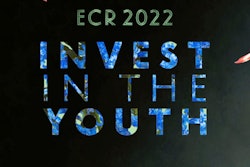
Beware of predators. That's a message some radiologists need to hear, especially those keen on becoming published authors, according to an article published on 8 September in Current Problems in Diagnostic Radiology.
A team led by Dr. Rishi Philip Mathew of Rajagiri Hospital in Kochi, Kerala, India, described the seedy side of open access publishing for aspiring authors in the radiology community. It's a corrupt scene that ultimately pollutes science to the tune of $77 million a year in authors' fees, the group wrote.
"Over the last few decades, the authenticity and confidence of scientific work from around the world has been systematically corrupted by predatory journals and their affiliated publication houses," the team warned.
The phrase "predatory open access publishing" was coined in 2012 by University of Colorado librarian Jeffrey Beall, who went on to compile and maintain a list of likely deceptive journals on a website called Beall's List. The site officially shut down in 2017, although the study authors report it may be currently maintained by an anonymous postgrad based in Europe.
Examples of the ubiquity of predatory journals abound, however, as in a "sting operation" led by Polish psychologist Piotr Sorokowski, PhD, in 2017, the authors stated.
Sorokowski posed as a bogus scientist and submitted a fake application for an editor's post to 360 journals -- a mix of legitimate and suspected predatory ones. The bogus scientist was accepted by 48 journals, four of which offered the applicant the editor-in-chief position, with strings attached, such as publishing an article in their journal for a fee or recruiting fellow colleagues for paid submissions.
There's no shortage of deceptive journals in radiology, according to Mathew and colleagues. A study last year updated Beall's original list to include 66 radiology journals from 27 publishers, 50% of which reported addresses in the U.S.
One commonly used deceptive strategy is to lure authors by employing aggressive marketing and sending numerous spam emails for unsolicited article submissions. Another trick is to use titles that look or sound similar to legitimate ones, with the difference between the two being as little as a single word.
The authors suggested the following for recognizing and weeding out potential predatory journals:
- Is it spam? Predatory journals bombard researchers with flattering emails inviting them to submit manuscripts or serve on editorial boards. It's a common tactic. Don't bite, the authors wrote.
- Misleading metrics: An Index Copernicus value is a misleading metric often highlighted on homepages of these journals. "Indexation" with indexes such as "Google Scholar" are a red flag.
- Manuscript submission: Predatory journals often invite submissions via email, rather than through standardized submission systems like ScholarOne and Editorial Manager.
- Rapid publication: How fast do you want to be published? These journals assure fast, uncorroborated peer-review process often involving unqualified and inexperienced reviewers (if at all any), leading to a publication in days to weeks with no option for retraction.
- Questionable credentials: Red flag journals with editors with questionable credentials and contact details or inaccurate or insufficient information regarding ownership or publisher, the authors suggest. Nonprofessional email accounts -- @gmail.com or @yahoo.com -- are a sign.
- Low APCs: Predatory journals entice authors with very low article processing charges (APCs) up to 18 times less than legitimate ones. Studies found the median fee at deceptive journals is $100 versus $1,866 to $3,000 for legitimate journals. Moreover, predatory journals do not always reveal APCs to authors prior to article submission.
- Copyright: If there's no mention of copyright, or if an open access policy is mentioned but the journal retains the copyright, flag it.
- Where is it actually from? Using noticeable words like "American, " "Australian," "Canadian," "European," or "International" in the journal title can be part of the scam. In reality, the operation is likely based in a developing country.
Hope is not lost, according to Mathew's team. Resources are available. Start by identifying potential predatory journals.
"Once identified, we as responsible individuals should bring it to the attention of our colleagues as well as our institutions to boycott or even blacklist these journals, both as authors and readers," the authors wrote.
Ultimately, whether open access publishing is a boon or bane for research remains controversial, the authors stated. Regardless, deceptive journals and publishers are breeding, particularly in developing countries, and the negative impact of these journals can have direct implications on patient health care and research.
"It is our collective responsibility as members of the scientific community to carefully scrutinize a journal before submitting a work, and thereby ultimately weeding out this rapidly breeding nuisance," the team concluded.



















